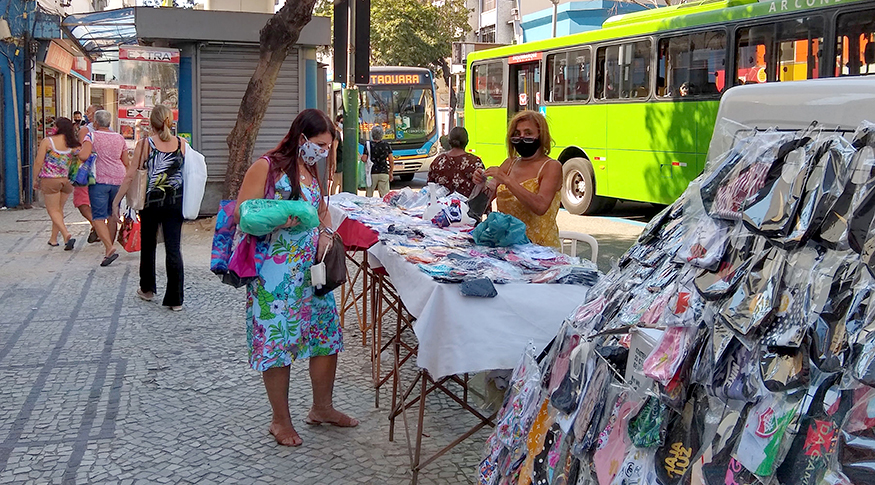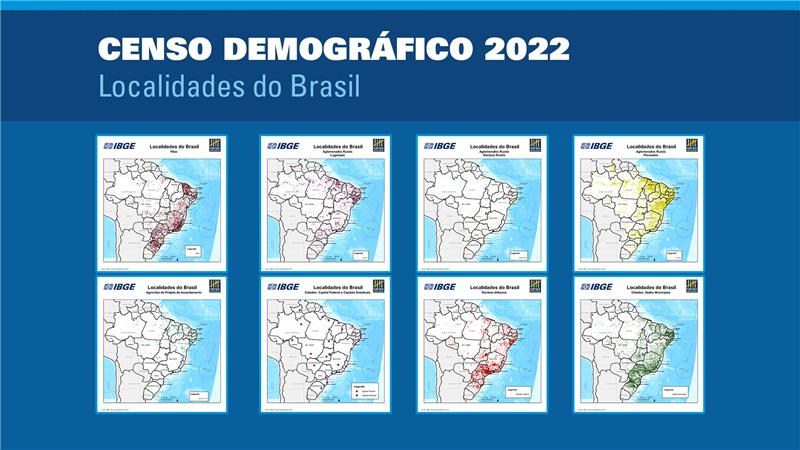Continuous PNAD
Unemployment retreats to 14.1% in Q2, still hits 14.4 million persons
August 31, 2021 09h00 AM | Last Updated: August 31, 2021 02h57 PM

The unemployment rate retreated to 14.1% in the second quarter this year, a reduction of 0.6 percentage points in relation to the first quarter. Despite the decrease in the rate, Brazil still adds up to 14.4 million persons searching for a job. The data came from the Continuous National Household Sample Survey - Continuous PNAD, released today (31) by the IBGE.
The retreat in the rate was influenced by the increase in the number of employed persons (87.8 million), which advanced 2.5%, with more 2.1 million in the period. As a result, the employment-population ratio rose 1.2 percentage points to 49.6%, which points out, however, that less than half of the population at working age is employed in Brazil.
“The growth in the employment occurred in several forms of work. Up to now, we have been noticing increases in self-employment and in jobs without a formal contract, yet a small movement in jobs with a formal contract. However, a positive movement was registered in the second quarter, with more 618 thousand persons in the contingent of persons employed with a formal contract,” explains Adriana Beringuy, an analyst of the survey.
The number of persons employed with a formal contract in the private sector advanced 2.1%, adding up to 30.2 million in the second quarter of the year over the previous one. In the comparison with the same quarter last year, the contingent remained stable, yet it interrupted four consecutive quarters of drops.
Employment also advanced in the second quarter, with the increase of 3.4% in the number of those employed in the private sector without a formal contract (10.0 million) compared with the previous quarter. That contingent increased 16.0% or 1.4 million persons in relation to the second quarter a year ago.
Self-employment hits record of 24.8 million persons
Self-employment also stood out, hitting a record of 24.8 million persons, a growth of 4.2% compared with the previous quarter. In a year, that contingent advanced 3.2 million, a rise of 14.7%. 52.2% of the rise in the monthly comparison and 62.7% of that rise in the annual comparison came from the increase in the number of self-employed persons without CNPJ.
Beringuy notes that the increase in employment in the second quarter was mainly produced by activities related to housing and food (9.1%), construction (5.7%), domestic services (4.0%) and agriculture, livestock, forestry, fishing and aquaculture (3.8%).
“Housing and food, which includes restaurants and hotels, advanced 7.7% in the annual comparison, the first growth after four quarters of drops. Nevertheless, that advance did not cause the activity to resume the pre-pandemic level, though it is a slight recovery, after recording the second biggest loss of workers in 2020, just behind domestic work,” says the survey´s analyst.
Domestic work (5.1 million) did not significantly change against the first quarter of the year, yet it advanced 8.4% compared with the second quarter of 2020. The category of employers (3.8 million) remained stable in both comparisons. On the other hand, the public sector (11.8 million) reduced 4.4% (less 539 thousand persons) over the same quarter last year.
In a year, number of informal workers grows nearly 5.0 million
Informal workers, which include those workers without a formal contract (either employed in the private sector or domestic workers), without CNPJ (either employers or self-employed) or unpaid workers, added up to 35.6 million persons and a rate of 40.6%. The rate was 39.6% in the previous quarter, with 34.0 million informal workers. That contingent was smaller a year ago: 30.8 million and a rate of 36.9%.
Time-related underemployed hit a record of 7.5 million
PNAD also unveils that time-related underemployed workers, those who work less hours than they could work, hit a record of 7.5 million persons, an increase of 7.3%, with more 511 thousand persons. That indicator rose 34.4% in relation to the same quarter last year, when 5.6 million underemployed persons lived in Brazil.
Discouraged persons (5.6 million), persons who gave up looking for a job due to the structural conditions of the market, reduced 6.5% over the first quarter of the year. Yet, that contingent remains stable compared with the second quarter a year ago.
The contingent of underemployed persons, which are those unemployed, time-related underemployed or in the potential workforce, was of 32.2 million, a reduction of 3.0% in relation to the first quarter (33.2 million). The composite underutilization rate was 28.6% as well.
Average earnings of workers decline to R$2,515
The real average earnings of workers was R$2,515, a decline of 3.0% over the quarter between January and March 2021 and a reduction of 6.6% in relation to the same quarter a year ago. The real wage bill, which is the sum of all workers´ earnings, remained stable, hitting R$215.5 billion.
More about the survey
The Continuous PNAD is the major instrument to follow up the workforce in Brazil. The sample of the survey per quarter corresponds to 211 thousand households surveyed in Brazil. Nearly two thousand interviewers work in the survey in 26 states and in the Federal District, integrated in the data collection network of more than 500 IBGE agencies. The tables with the complete results are available at Sidra.
Since March last year, the survey data collection has been carried out through telephone only, due to the pandemic. As of July 5 this year, the data collection has not been exclusively remote, but also face-to-face, according to Ordinance no. 207/2021 of the Presidency of the IBGE, which relaxed some activities considered essential.

















